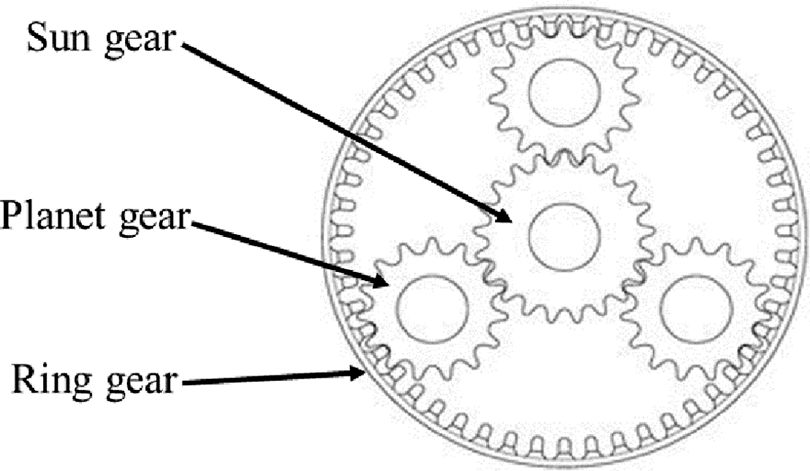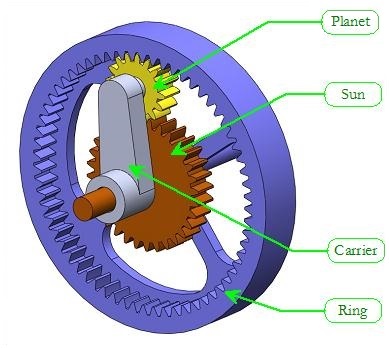Product Description
Product Description
Product Parameters
| Item | Spur Gear Axle Shaft |
| Material | 4140,4340,40Cr,42Crmo,42Crmo4,20Cr,20CrMnti, 20Crmo,35Crmo |
| OEM NO | Customize |
| Certification | ISO/TS16949 |
| Test Requirement | Magnetic Powder Test, Hardness Test, Dimension Test |
| Color | Paint , Natural Finish ,Machining All Around |
| Material | Aluminum: 5000series(5052…)/6000series(6061…)/7000series(7075…) |
| Steel: Carbon Steel,Middle Steel,Steel Alloy,etc. | |
| Stainess Steel: 303/304/316,etc. | |
| Copper/Brass/Bronze/Red Copper,etc. | |
| Plastic:ABS,PP,PC,Nylon,Delrin(POM),Bakelite,etc. | |
| Size | According to Customer’s drawing or samples |
| Process | CNC machining,Turning,Milling,Stamping,Grinding,Welding,Wire Injection,Cutting,etc. |
| Tolerance | ≥+/-0.03mm |
| Surface Treatment | (Sandblast)&(Hard)&(Color)Anodizing,(Chrome,Nickel,Zinc…)Plating,Painting,Powder Coating,Polishing,Blackened,Hardened,Lasering,Engraving,etc. |
| File Formats | ProE,SolidWorks,UG,CAD,PDF(IGS,X-T,STP,STL) |
| Sample | Available |
| Packing | Spline protect cover ,Wood box ,Waterproof membrane; Or per customers’ requirements. |
Our Advantages
Why Choose US ???
1. Equipment :
Our company boasts all necessary production equipment,
including Hydraulic press machines, Japanese CNC lathe (TAKISAWA), Korean gear hobbing machine (I SNT), gear shaping machine, machining center, CNC grinder, heat treatment line etc.
2. Processing precision:
We are a professional gear & gear shafts manufacturer. Our gears are around 6-7 grade in mass production.
3. Company:
We have 90 employees, including 10 technical staffs. Covering an area of 20000 square meters.
4. Certification :
Oue company has passed ISO 14001 and TS16949
5.Sample service :
We provide free sample for confirmation and customer bears the freight charges
6.OEM service :
Having our own factory and professional technicians,we welcome OEM orders as well.We can design and produce the specific product you need according to your detail information
Cooperation Partner
Company Profile
Our Featured Products
| Application: | Motor, Electric Cars, Motorcycle, Machinery, Marine, Agricultural Machinery, Car |
|---|---|
| Manufacturing Method: | Cast Gear |
| Toothed Portion Shape: | Spur Gear |
| Material: | Stainless Steel |
| Type: | Circular Gear |
| Yield: | 5, 000PCS / Month |
| Samples: |
US$ 0/Piece
1 Piece(Min.Order) | |
|---|
| Customization: |
Available
| Customized Request |
|---|

How does a sun gear contribute to the overall efficiency of a gear arrangement?
A sun gear plays a significant role in determining the overall efficiency of a gear arrangement. Let’s explore how a sun gear contributes to the efficiency of a gear system:
- Power Transmission:
The sun gear serves as the primary driver in many gear systems, transmitting power from the input source to the output component. Its contribution to power transmission efficiency is crucial. A well-designed sun gear ensures minimal power loss during the transfer of rotational force.
Efficiency is influenced by factors such as gear material, surface finish, and lubrication. The sun gear’s design, including its tooth profile, size, and alignment with other gears, affects the smoothness of power transmission, minimizing energy losses due to friction and misalignment.
- Load Distribution:
The interaction between the sun gear and other gears, such as planet gears or ring gears, influences load distribution within the gear arrangement. An efficient sun gear design ensures that the load is evenly distributed across all engaged gears, reducing the stress on individual gear teeth.
Uniform load distribution helps prevent premature wear and damage to the gears, enhancing overall efficiency and extending the gear system’s lifespan. By efficiently distributing the load, the sun gear contributes to a more balanced distribution of forces within the gear arrangement.
- Reduced Friction and Wear:
The sun gear’s smooth operation is vital for minimizing friction and wear within the gear system. When the sun gear meshes with other gears, such as planet gears or ring gears, it should have proper tooth engagement and alignment.
An accurately designed sun gear reduces sliding friction and ensures a rolling contact between the gear teeth. This rolling contact reduces wear, heat generation, and energy losses due to friction. By minimizing friction and wear, the sun gear enhances the overall efficiency of the gear arrangement.
- Optimized Gear Ratios:
The sun gear’s size and its relationship to other gears in the arrangement significantly impact the gear ratios. Efficient gear ratios are essential for achieving the desired output speed and torque in a gear system.
An optimized sun gear design, along with carefully selected sizes for other gears, allows for efficient gear ratio selection. This ensures that the gear system operates within the desired speed and torque range, maximizing the overall efficiency of the arrangement.
- Minimized Energy Losses:
An efficient sun gear design aims to minimize energy losses within the gear arrangement. Energy losses can occur due to factors such as friction, misalignment, and inefficient power transmission.
By focusing on factors like gear tooth profile, material selection, lubrication, and proper alignment, the sun gear can contribute to the reduction of energy losses. Minimizing energy losses improves the overall efficiency of the gear arrangement, ensuring more effective utilization of input power.
- System Optimization:
The sun gear’s contribution to the overall efficiency of a gear arrangement is part of a broader system optimization process. Engineers consider various factors, including gear design, material selection, lubrication, and operating conditions, to maximize the efficiency of the entire gear system.
The sun gear, as a vital component, is optimized in conjunction with other gears and system parameters to achieve the desired efficiency levels. Its design and performance directly impact the overall efficiency of the gear arrangement.
In conclusion, the sun gear’s contribution to the overall efficiency of a gear arrangement lies in its role in power transmission, load distribution, friction reduction, optimized gear ratios, and minimizing energy losses. By considering these factors and optimizing the sun gear’s design, engineers can enhance the efficiency and performance of gear systems in various applications.

How does a sun gear handle variations in load and speed conditions?
A sun gear is designed to handle variations in load and speed conditions in mechanical systems. Its unique positioning and interaction within a planetary gear arrangement contribute to its ability to adapt to changing load and speed requirements. Here’s an explanation of how a sun gear handles variations in load and speed conditions:
- Load Distribution:
In a planetary gear system, the sun gear is located at the center and engages with multiple planet gears, which in turn interact with the outer ring gear. This configuration enables the sun gear to distribute the load among the planet gears. As the load on the system varies, the distribution of load among the planet gears adjusts accordingly. The load distribution mechanism allows the sun gear to handle variations in load conditions by effectively sharing the load across multiple contact points.
- Torque Amplification:
The arrangement of the sun gear, planet gears, and ring gear in a planetary system allows for torque amplification. By changing the number of teeth on the gears and their relative sizes, the gear ratio can be customized. This capability enables the sun gear to adapt to variations in load and speed conditions. When higher torque is required, the gear system can be configured to provide torque amplification by increasing the gear ratio. Conversely, when lower torque is needed, the gear ratio can be adjusted accordingly. This flexibility in gear ratio configuration allows the sun gear to handle variations in load and speed by adapting the torque output.
- Speed Regulation:
Another way the sun gear handles variations in load and speed conditions is through speed regulation. In a planetary gear system, the sun gear’s rotation speed is determined by the input speed and the gear ratio configuration. By adjusting the gear ratio, the rotational speed of the sun gear can be controlled. This speed regulation capability allows the sun gear to adapt to changing speed requirements. When higher speeds are necessary, the gear ratio can be adjusted to increase the rotational speed of the sun gear. Similarly, when lower speeds are desired, the gear ratio can be modified accordingly. The sun gear’s ability to regulate its rotational speed enables it to accommodate variations in load and speed conditions.
- Sturdy Construction:
Sun gears are typically constructed from durable materials such as hardened steel or other high-strength alloys. This robust construction enables them to withstand the forces generated by variations in load and speed conditions. The sturdy design of sun gears ensures that they can handle the stresses and strains associated with changing operating conditions without experiencing premature wear or failure.
In summary, a sun gear handles variations in load and speed conditions through load distribution among the planet gears, torque amplification or reduction based on the gear ratio configuration, speed regulation by adjusting the gear ratio, and its sturdy construction. These features enable the sun gear to adapt to changing requirements, ensuring reliable and efficient operation in various mechanical systems.

How does a sun gear affect the overall gear ratio in a system?
The presence and characteristics of a sun gear play a significant role in determining the overall gear ratio in a system. Understanding how the sun gear affects the gear ratio helps in analyzing and designing gear systems with the desired performance. Here’s an explanation of how a sun gear affects the overall gear ratio in a system:
- Number of Teeth: The number of teeth on the sun gear influences the gear ratio. In a simple gear system, where the sun gear engages with a single gear, the gear ratio is determined by the ratio of the number of teeth on the two gears. For example, if the sun gear has 10 teeth and the other gear has 30 teeth, the gear ratio would be 1:3, meaning the output gear rotates three times slower than the sun gear.
- Arrangement with Other Gears: In more complex gear systems, such as planetary gear configurations, the arrangement of the sun gear with other gears further influences the gear ratio. In a planetary gear set, the sun gear engages with multiple planet gears and an outer ring gear. By manipulating the sizes and arrangements of these gears, a wide range of gear ratios can be achieved. For instance, if the sun gear is fixed, the ring gear becomes the output and the gear ratio is determined by the relative sizes of the sun gear, planet gears, and ring gear.
- Planet Gears: The number of planet gears in a planetary gear system also affects the gear ratio. Increasing or decreasing the number of planet gears alters the gear ratio by changing the load distribution and the interaction between the sun gear and the ring gear. More planet gears generally result in a higher gear ratio, while fewer planet gears tend to reduce the gear ratio.
- Epicyclic Gear Trains: The arrangement of gears in an epicyclic gear train, which includes the sun gear, planet gears, and ring gear, allows for even more complex gear ratios. By fixing or holding certain gears while others are driven, various gear ratios can be achieved. For example, fixing the ring gear and driving the sun gear produces a different gear ratio compared to fixing the sun gear and driving the ring gear.
- Variable Gear Ratio: In some systems, the gear ratio can be varied by changing the position or speed of the sun gear. This can be achieved using mechanisms such as adjustable clutches or continuously variable transmissions (CVTs). By modifying the engagement between the sun gear and other gears, the gear ratio can be adjusted to optimize performance for different operating conditions.
In summary, the presence and characteristics of a sun gear, including the number of teeth, its arrangement with other gears, the presence of planet gears, and the overall gear system configuration, all contribute to the determination of the gear ratio. Understanding these factors allows for the design and control of gear systems with specific gear ratios to meet the requirements of various mechanical applications.


editor by CX 2023-10-26